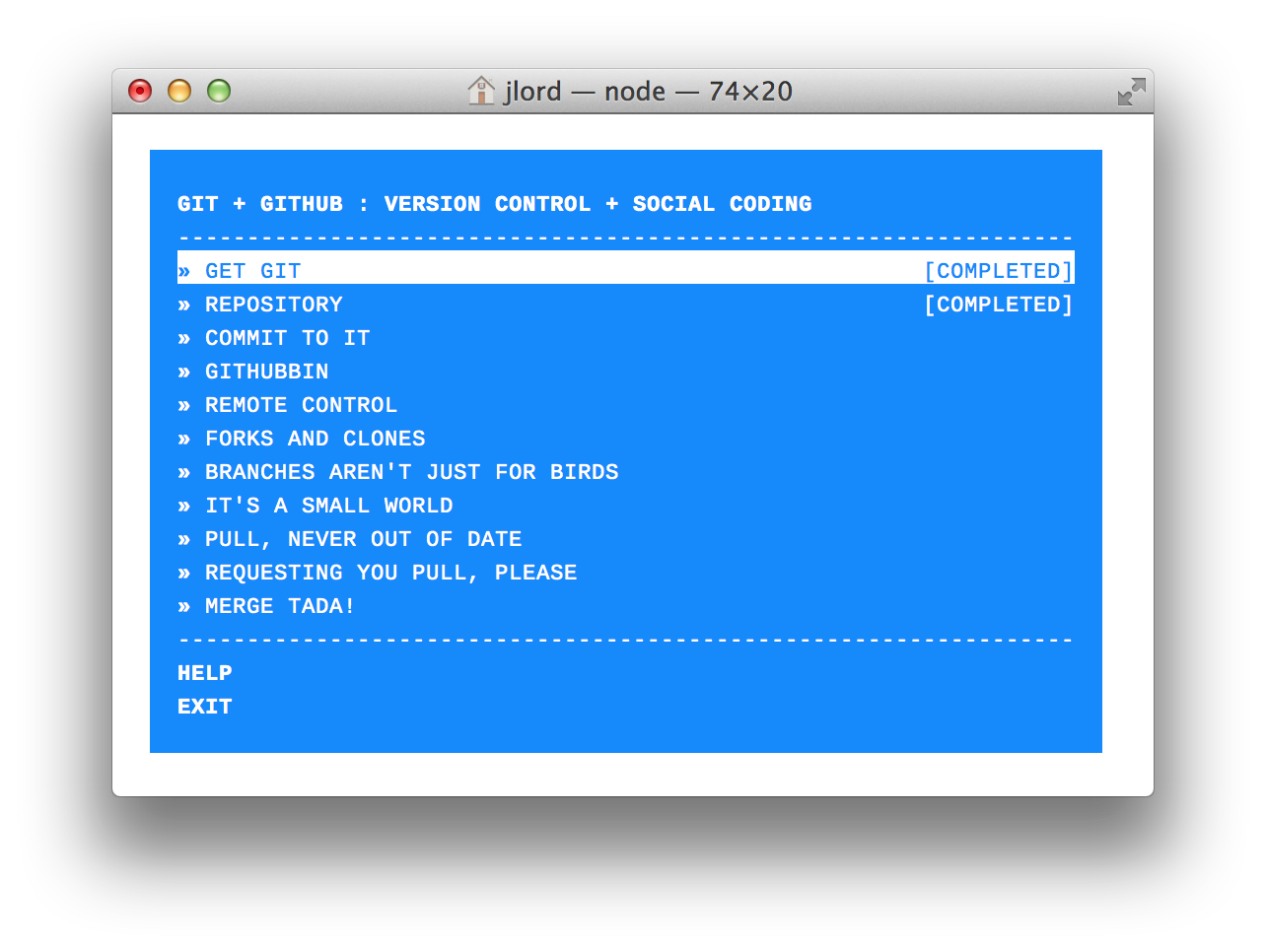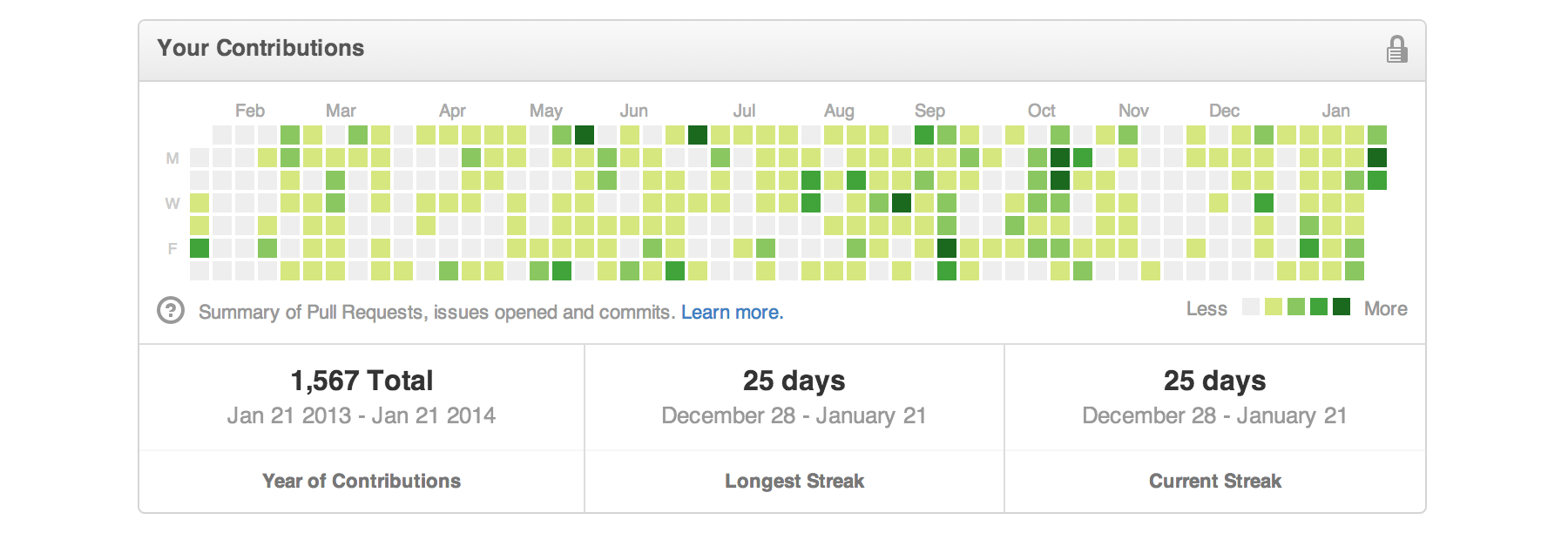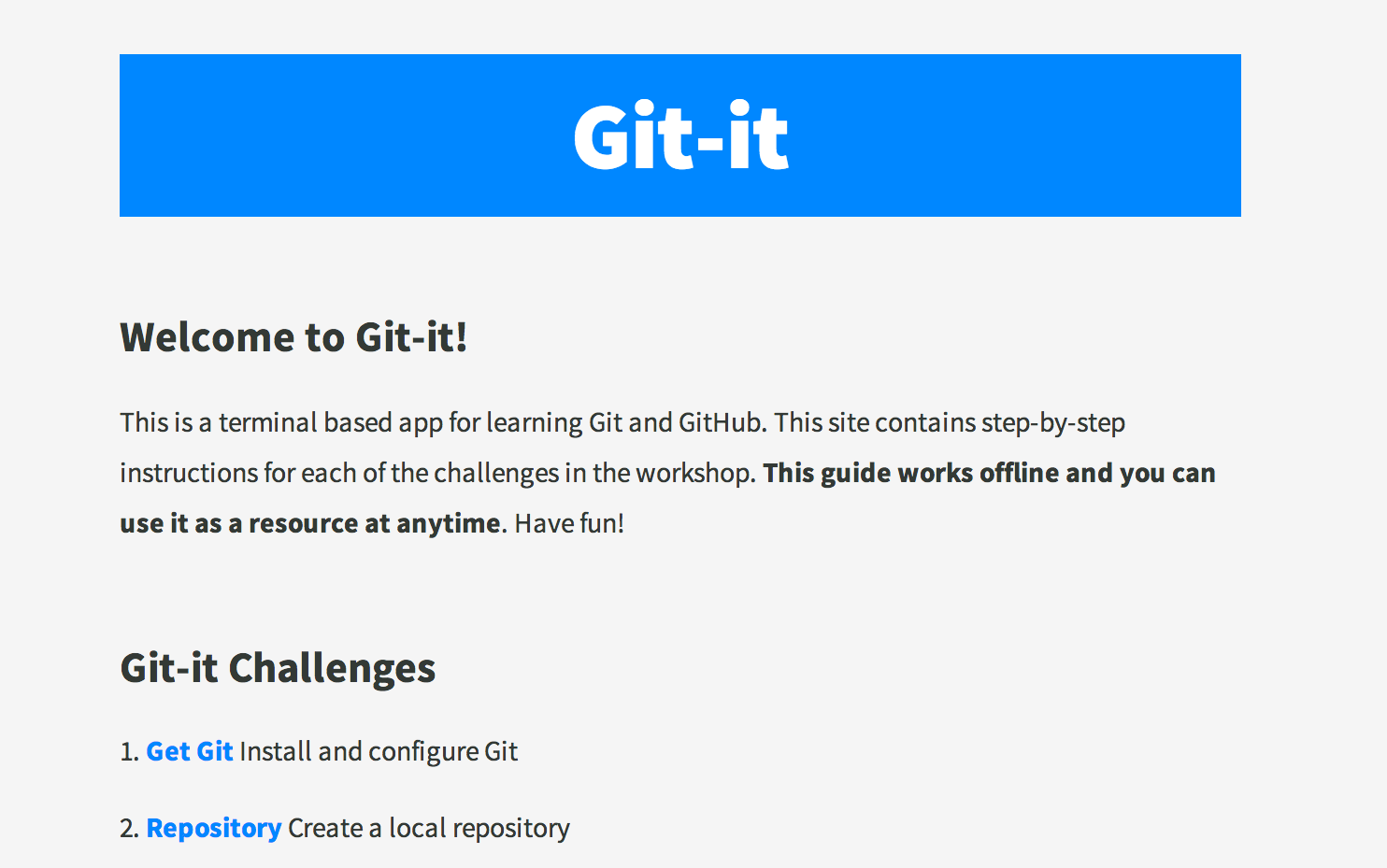:wave: Hi! I've been working on a desktop version of Git-it—same challenges, same result, just as its own app rather than something that runs in your terminal. You could give it a try if you'd like, download the one for your operating system here: github.com/jlord/git-it-electron/releases. Eventually it will replace this terminal based version of Git-it :pizza:
| :computer: | What is this? |
|---|---|
 | A workshopper module for learning Git and GitHub - Social coding, y'all. These modules run a little app in your terminal and users work their way through the challenges. See nodeschool.io for more. |
This app runs in your Terminal (Mac) or Bash (Windows) and has challenges for learning Git and GitHub. It uses the real terminal (so you'll be learning the awesome command line), it uses real Git and GitHub which means when you finish all of the challenges you'll have real repositories on your GitHub account and green squares on your contribution chart.

See what topics are covered in Git-it on the challenge table of contents within the Git-it guide.
Developer or workshop host? Useful links: Contributing // Troubleshooting // New Version in Progress!
Sections: Install these first // Install Git-it // Using Git-it // Tips
A few development essentials, all are free and/or free and open source.
.msi or Mac .pkg option).*There actually isn't "coding" required to complete Git-it so you're fine to use the default Notepad or TextEdit that comes with Mac/PC.
Once you have the essentials above, install Git-it.
$ npm install -g git-it
sudo npm install -g git-it$ git-it
git-it and the menu has loaded, use the arrows ↑↓ to select the first challenge and press 'enter'.
git-it verify in terminal.git-it again to load the menu and select the next challenge!If you have any questions about something, just create a new issue or visit the troubleshooting doc.
Code snippets often times look like $ some code-stuff --here. The dollar sign identifies the line as one a user would enter into the the command line, but you don't actually include it when you type it into terminal. In this case, you'd actually just type some code-stuff --here.
Variables are indicated by <VARIABLENAME> in code snippets. When you actually use the line of code, replace it, including the <>, with your variable. For instance to make a new folder in terminal the format is, mkdir <FOLDERNAME>, so if you wanted to make a folder named 'octocat', you'd type: mkdir octocat.
Command line, terminal, bash all basically mean the same thing: the MS-DOS, Doogie Howser looking screen full of words and numbers. It's awesomely powerful and allows you to control your computer with text commands.
You can do a lot of things from your terminal like delete, rename, copy or create files and folders; run scripts and send things back and forth between servers (like the ones storing things on GitHub.com) and your computer (also a server!).